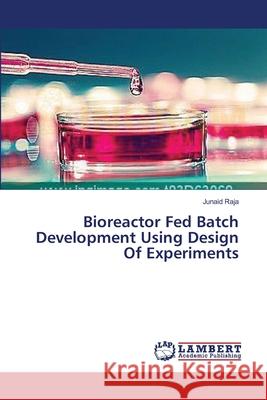Bioreactor Fed Batch Development Using Design Of Experiments » książka
Bioreactor Fed Batch Development Using Design Of Experiments
ISBN-13: 9783659561344 / Angielski / Miękka / 2014 / 116 str.
In conventional fed batch process development approaches, batch operating parameters are kept constant and only feeding parameters such as feeding time, post-feed concentration are manipulated, whereas any interactions among the batch and fed-batch operating parameters are not evaluated. In this study an attempt was made to study the interaction between fed-batch operating parameter-post feed glucose concentration (A) and batch operating parameters- seeding density (B), temperature (C), and dissolved oxygen concentration (D) by their simultaneous manipulation, as well as the effect of these interactions on cell growth and monoclonal antibody (mAb) production. NS0 cell line producing the mAb's against carcino-embryogenic antigen (Anti-CEA) was used. The final mAb concentration, viable cell density and integral of viable cell concentration (IVCC) were the responses evaluated. Statistical analysis experimental data showed that parameter (A) and its interaction with batch parameter (B) were the main factors affecting both the response variables. In comparison to the batch run, the developed fed batch process increased the mAb titer by 10 fold.
In conventional fed batch process development approaches, batch operating parameters are kept constant and only feeding parameters such as feeding time, post-feed concentration are manipulated, whereas any interactions among the batch and fed-batch operating parameters are not evaluated. In this study an attempt was made to study the interaction between fed-batch operating parameter-post feed glucose concentration (A) and batch operating parameters- seeding density (B), temperature (C), and dissolved oxygen concentration (D) by their simultaneous manipulation, as well as the effect of these interactions on cell growth and monoclonal antibody (mAb) production. NS0 cell line producing the mAbs against carcino-embryogenic antigen (Anti-CEA) was used. The final mAb concentration, viable cell density and integral of viable cell concentration (IVCC) were the responses evaluated. Statistical analysis experimental data showed that parameter (A) and its interaction with batch parameter (B) were the main factors affecting both the response variables. In comparison to the batch run, the developed fed batch process increased the mAb titer by 10 fold.











